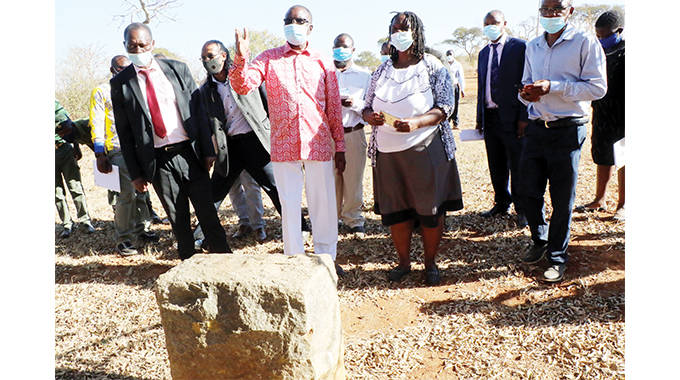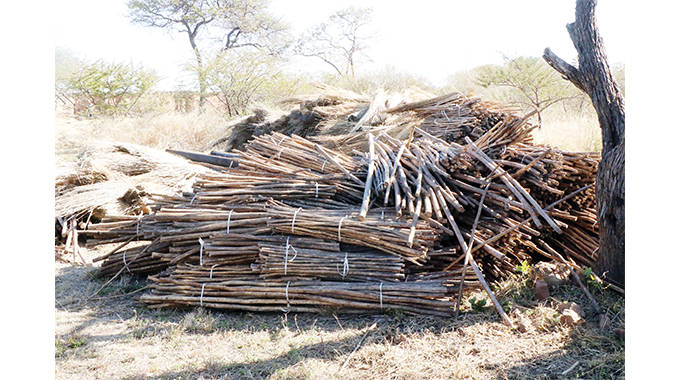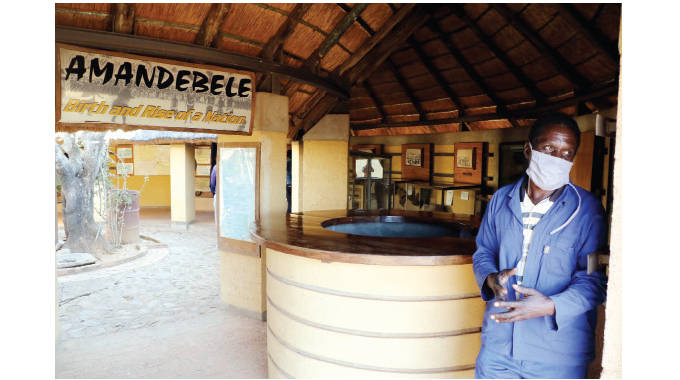
The Sunday News

Bruce Ndlovu, Sunday Life Reporter
WHEN the grand plan to reconstruct King Lobengula’s home in Old Bulawayo was hatched all the way back in 1998, there were six women that were tasked with putting in the hard labour required to rebuild a palace first brought down in 1881.
The half dozen women chosen for this task had to retrace the archaeological footsteps taken by their ancestors, footsteps that were almost wiped out by anger and fire when one of the king’s indunas, Magwegwe Fuyane, led the process of burning down the capital in protest against the invasion of white settlers.
And so it was that in 1998, 117 years after the glorious palace had come down in a blaze of fire, these women were tasked with breathing life back into Old Bulawayo. They were to re-imagine and rebuild the beehive structures that were a feature of the Nguni homesteads of old.
Six women set upon that journey before the turn of a millennium and now, in a new millennium, there is only one.
Senzeni Khumalo, the only one of those six women who remains, remembers those days when, under the tutelage of women from KwaZulu-Natal, they took the first steps towards the resuscitation what was the original seat of Ndebele royalty.
“The indigenous was passed on to us by Zulu women in South Africa. National Museum and Monuments of Zimbabwe (NMMZ) had to go to Zululand in South Africa to get those women to come and teach us how to design and build the beehive structures here. Unfortunately, there were six of us and five have since left. I am the only one remaining of those six women that we taught how to do the beehive construction. This is why I must also pass on this indigenous knowledge system to others,” said Khumalo, now the Curator of Archaeology at the Natural History Museum.

Minister in the President’s Office in Charge of Policy Implementation Jorum Gumbo stresses a point during a tour of Old Bulawayo recently. Accompanying him are: Matabeleland South Minister of State for Provincial Affairs Abednico Ncube (left) and Curator of Archaeology for Natural History Museum, Senzeni Khumalo
For three months Khumalo and her five colleagues were given a crash course on how to make the beehive huts or iqukwane. They learnt how to collect the outer sticks and place them in a circle on the ground, to bind and thatch the structure using braided split reeds and grass. They learnt how to use a central tree trunk as a support and how to make the door low so as to force any potential foe to stoop before entering the hut.
They learnt how dung and termite mound were mixed into a thick cocktail and spread to form the floor, and how this combination would turn rock hard and may be polished to a mirror-like finish using a polishing stone. They learnt how the same material is used to form a raised hearth near the central pole.
“We began this work in 1998. The Zulu women came here for three months and then they went back. They only did one beehive and we did the rest,” Khumalo said.
Fire brought down Old Bulawayo in 1891 and fire brought it down again in 2010. Eleven years later, the Government has pledged resources for the revival of the monument and Khumalo is leading a team that stands ready to restore it to its former glory. The local community will play a pivotal role in this.
“We want it to look like the old King Lobengula Palace before it was burnt down by King Lobengula in 1891. We are reviving the Ndebele culture, we are reviving our nation for both educational and tourism purposes. I am in the process of passing on this knowledge (of building beehive huts).
“Last time, between 2001 and 2003, I recruited the local community based here at Hope Fountain to help us with the building of the structures. I hope that the women that I worked with all those years back are still around. We are going to work with them again on a contract basis to come and help with the construction. I am now old and I cannot do some of the work that would be required,” Khumalo said.
According to Khumalo, the revival of Old Bulawayo has been divided into two phases, with the first set to be completed this month. Besides the royal enclosure, some historical gems that lay derelict include a sanctuary built by the Jesuits, thought to be the first home of Roman Catholics in the country and the Indaba tree, where King Lobengula held crucial meetings.
“Old Bulawayo was placed under the Government’s 100 Day Programme. We have divided this project into two phases. The first phase is going to be completed on 23 July. The second phase will start in August and that’s when we will start counting its 100-day cycle. The reconstruction is concerned with the Royal Enclosure and the Interpretive Centre only for now. We are yet to engage with the Roman Catholic Church to come and do their reconstruction here if they’re able. We will assist them with the designs,” Khumalo said.

When Sunday News visited Old Bulawayo last week, men were hard at work, grappling with wood and stone in the hot winter sun, with each blow of a hammer on a nail bringing closer the dream of reviving the palace. For Prince Mpofu, a recently hired hand on the site, waking up in the morning to shed sweat at Old Bulawayo has become a source of pride.
“It makes me happy to be on the ground when something historical like this is happening,” the 21-year-old told Sunday Life. “In my life I never thought I would one day be working on something with this kind of significance.
When we get here, we work from the morning and the work doesn’t stop. We take breaks here and there but we keep on our task gradually getting everything done.”
Speaking at the sidelines of a tour of Old Bulawayo, the Minister of State for Presidential Affairs in Charge of Implementation and Monitoring Dr Joram Gumbo said plans to restore the palace had been set back by Covid-19.
“I think its common knowledge that a lot of projects have stalled because of Covid-19. As of now, we are also under lockdown and that affects the work that will be done here. There are many issues that go into the implementation of such projects. You need money and the monies that are required sometimes come in drips. You can’t get the money and disburse it immediately so that those that are implementing can work at their own pace.
“What we are doing now is giving us timeframes, according to the 100-day cycle, to say that this is we will have covered in that timeframe. We then go around checking if they would have achieved the target that they would have set for themselves. You heard the lady saying that within the 100 days they would have finished one or two of the beehives,” he said.
While some questioned the necessity of restoring the palace after King Lobengula destroyed it himself in 1881, Dr Gumbo said the preservation of history made the work of reviving Old Bulawayo necessary and important.

“Both places are very important. Even if he destroyed it, we want to know that this is where King Lobengula once stayed . . . it is important for us as Zimbabweans to say this is the place where he settled when he came from Zululand and he destroyed it when he moved to another place, which is now the State House.
“It is important that our people know that the State House (Bulawayo) that you know today is the place that he went to after he left this one. We can only speculate on the reasons as historians and archaeologists. It is important that we trace our history backwards as people. We have to say as Ndebele people, as Khumalo people, this is where our ancestor used to live. That is important and critical. We might have moved to beautiful houses in Bulawayo but it is important and critical to know and see how those who came before us lived,” he said.
Old Bulawayo is located about 22km southeast of Bulawayo, along Burnside Road.



